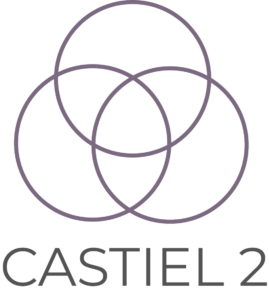Use Cases
Each of the CoE Use Cases below is a summary of a concrete case where the codes and machines of the CoEs are used to get state-of-the-art solutions of typical domain-specific problems.
All of the Use Cases show the power of the HPC resources in a real-world context and may inspire users for their specific application cases.
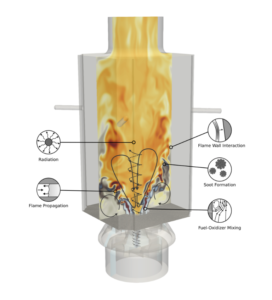
CoEC: Prediction of soot formation in practical applications
The goal of this use case is to demonstrate the predictive capabilities of Exascale simulations to provide accurate results of soot formation when applied to large-scale simulations.
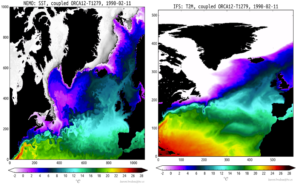
ESiWACE: Optimization of Earth System Models in the path to the new generation of Exascale high-performance computing systems
The main goal of this use case is to achieve the good scalability of the Earth System Model EC-Earth using resolutions up to 10 kilometres of horizontal spatial resolution
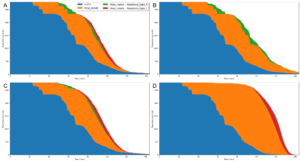
PerMedCoE: HPC-enabled multiscale simulation helps uncover mechanistic insights of the SARS-CoV-2 infection
In this use case, PermedCoE’s main aim is to uncover mechanistic insights that could help in the fight against SARS-CoV-2. Researchers use Boolean models of signalling pathways, agent-based models for populations of cells and the communication among virus, epithelial host cells and immune cells.
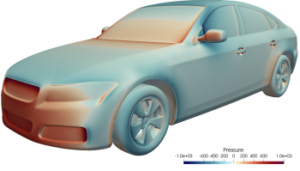
EXCELLERAT: Increasing accuracy in the automotive field simulations
The aim of this use case is to use a posteriori error estimation to drive both mesh adaption and CAD morphing in an iterative process to produce an optimal design for a given output of interest.
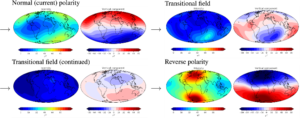
ChEESE: Geomagnetic forecasts
The objective of this use case is to simulate and analyse the consequences of geomagnetic reversals with an unprecedented level of accuracy. These events are extremely rare in the history of our planet, hence the need to resort to numerical simulations to better understand the properties of reversals and their possible consequences for society.
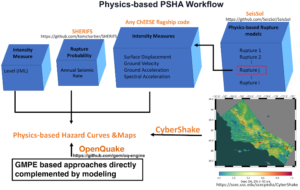
ChEESE: Physics-Based Probabilistic Seismic Hazard Assessment (PSHA)
The objectives of this use case is to develop general concepts for enabling physics-based seismic hazard assessment with state-of-the-art multi-physics earthquake simulation software and conduct 3D physics-based seismic simulations to improve PSHA for validation scenarios provided by IMO (Iceland) and beyond.
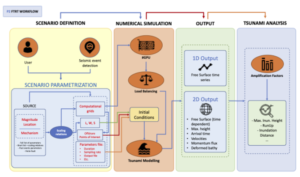
ChEESE: Faster Than Real-Time Tsunami Simulations
The aim of this use case is to provide robust and very efficient numerical codes for faster-than-real-time Tsunami simulations that can be run in massively parallel multi-GPU architectures.
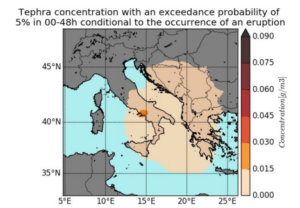
ChEESE: Probabilistic Volcanic Hazard Assessment (PVHA)
The objective of this use case is to provide innovative hazard maps with uncertainty, and overcoming the current limits of PVHA imposed so far by the high computational cost required to adequately simulate complex volcanic phenomena.
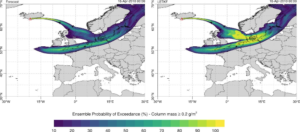
ChEESE: High-Resolution Volcanic Ash Dispersal Forecast
This pilot demonstrator is implementing an ensemble-based data assimilation system (workflow) combining the FALL3D dispersal model with high-resolution geostationary satellite retrievals in order to furnish high-resolution forecasts.
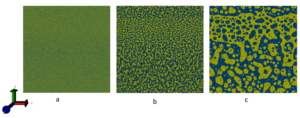
E-CAM: Mesoscale simulation of billion atom complex systems using thousands of GPGPUS’s
In collaboration with the UKRI STFC Daresbury Laboratory, E-CAM has developed a highly efficient version of DL_MESO, a software package for mesoscale simulations.

EXCELLERAT: Enabling parallel mesh adaptation with Treeadapt
Researchers developed a new application / library called Treeadapt for massively parallel mesh adaptation.
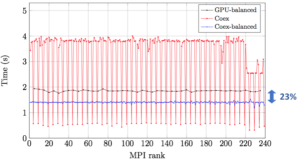
EXCELLERAT: Full Airplane Simulations On Heterogeneous Architectures
In this use case, Excellerat focused on maximising the parallel performance of the mesh partition process to minimise the load balancing overhead.

